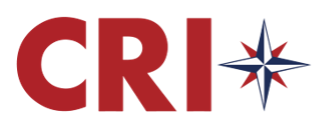Our Company
Quality results. Exceptional experience.
We support our customer’s business operations with proven experience, demonstrated results and key partnerships.
Quality standards
As a government contractor since 2002, we have a proven track record of meeting the high standards that are expected when supporting the public sector.
Strategic partnerships
Our key relationships enable us to provide a variety of services and solutions that help our customers achieve their mission and enhance their customer experience.
Small business mentor
As a Small Business Mentor through the Small Business Administration, we are dedicated to giving small businesses the support they need to succeed and grow their business.
Our story
Founded in 2002 by Scott Dillard and his father Johnny Dillard, PhD, a retired Marine Corps Officer, Vietnam Veteran and Army National Guard Lieutenant Colonel, CRI has grown from a Service-Disabled, Veteran-Owned Small Business to a multimillion-dollar large company, small business mentor and highly-regarded industry leader.
Our mission
To create value for our customers by being a trusted partner and premier provider of innovative products and services.
Our vision
We are dedicated to the success of our customers, employees and community.
Contract vehicles
GSA MAS • # GS-00F-0001U
Certifications
ISO 9001: 2015 Quality Management Systems (QMS)
ISO 27001:2022 Information Security Management Systems (ISMS)
Federal Information Security Management Act (FISMA)
Payment Card Industry Data Security Standard (PCI DSS) 3.2
Our values
Integrity
Quality
Innovation
Accountability
Teamwork
Community

Subcontracting Opportunities
CRI is always seeking qualified subcontractors that can provide high-quality and innovative services in several socioeconomic categories.
Our Location

106 N. Bloomington, Suite S
Lowell, AR 72745
Phone: 479.419.5456




